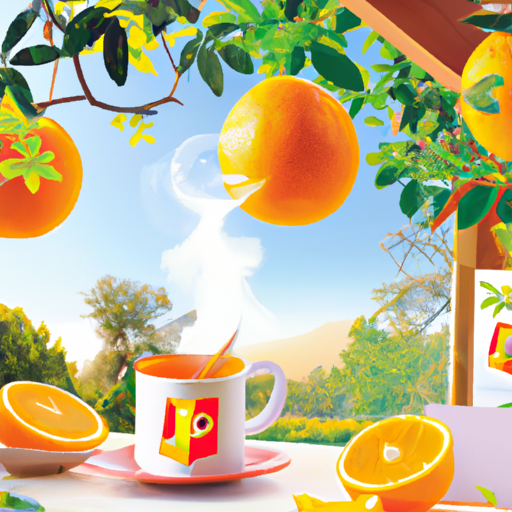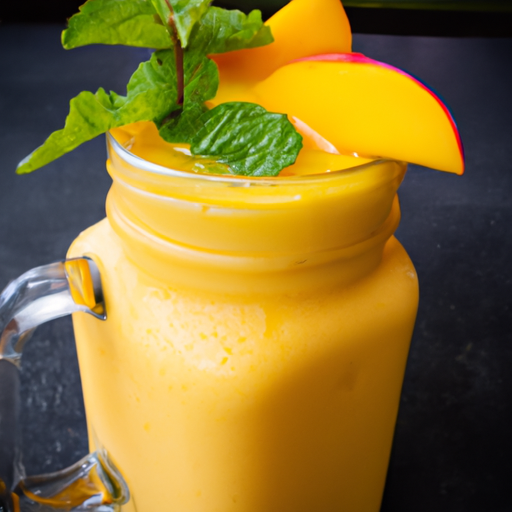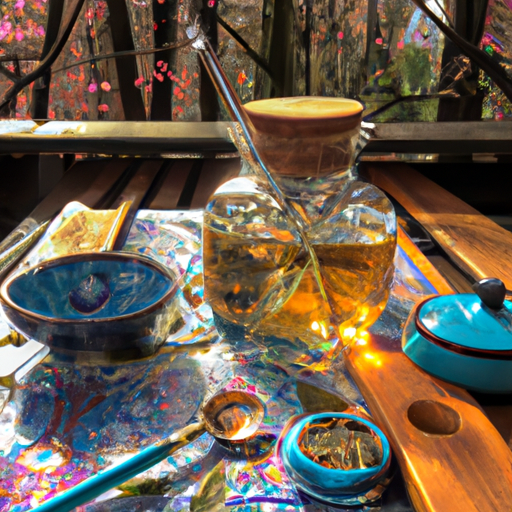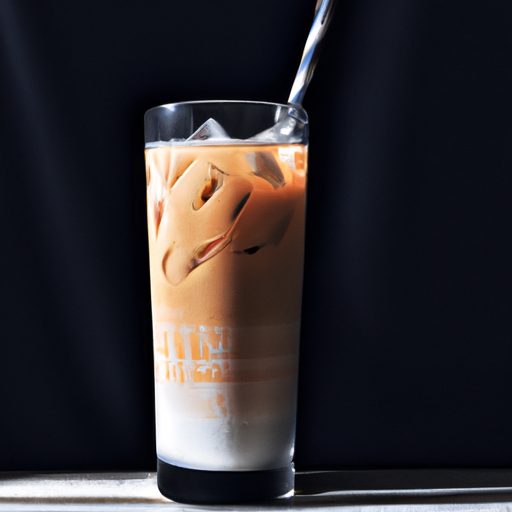They say that beauty is in the eye of the beholder, but I believe that beauty can also be found in a cup of tea. One sip of rose tea, and you will be transported to a world of enchantment and elegance. This captivating infusion, made from delicate rose petals or buds, is not just a treat for the senses; it is a potion that holds the power to nurture both body and soul.
Rose tea is more than just a beverage; it is a symbol of sophistication, love, and beauty. With its delightful taste and delicate aroma, it is no wonder that this tea has been cherished for centuries. But its allure goes beyond its enchanting flavor. Rose tea is believed to offer a myriad of health benefits, from promoting sleep and relieving pain to aiding digestion and potentially aiding in weight loss.
But the magic of rose tea doesn’t stop there. This infusion has inspired a whole world of blends and flavors, from the bold and robust Rose Black Tea to the exotic African Rose Herbal Tea. Each blend offers its own unique experience, but all share the same enchanting powers of the rose.
So, if you’re ready to indulge in a cup of pure bliss, join me on a journey into the enchanting world of rose tea. Discover its health benefits, explore its different types and blends, and experience the magic that lies within each sip. Let the enchanting powers of rose tea captivate your senses and transport you to a world of beauty and elegance.
Key Takeaways
- Rose tea is made from rose petals or rose buds and has been associated with sophistication, love, and beauty for thousands of years.
- Rose tea can be pure or blended with other herbal ingredients or real tea, and can be caffeine-free or contain caffeine depending on the tea leaves used.
- Drinking rose tea may provide health benefits such as antioxidant activity, promoting sleep, protecting the brain, relieving pain, treating dysmenorrhea, aiding digestion, and potentially aiding in weight loss.
- Rose petal tea has been found to have potential therapeutic effects, anti-inflammatory properties, anti-cancer properties, potential anti-aging effects, and benefits for skin health.
What is it?
I absolutely love rose tea! It’s an infusion made with either rose petals or rose buds, and it’s been associated with sophistication, love, and beauty for centuries.
Rose tea not only tastes delightful but also offers numerous benefits. It’s packed with antioxidants that can help protect our cells from damage caused by free radicals. This enchanting beverage is also known for its potential health benefits, such as promoting sleep, relieving pain, aiding digestion, and potentially aiding in weight loss.
Making rose tea is quite simple. All you need to do is steep 1 teaspoon of dried rose petals or 2 teaspoons of dried rose buds in boiling water for about 5 minutes. The result is a fragrant and soothing drink that can be enjoyed any time of the day.
So why not indulge in a cup of rose tea and experience its enchanting powers for yourself?
Health Benefits
Drinking this herbal infusion may provide various health benefits. Rose tea, with its potential therapeutic effects and anti-inflammatory properties, offers more than just a delightful taste and aroma. Research suggests that this enchanting brew may have the power to promote overall well-being.
One of the potential therapeutic effects of rose tea is its ability to alleviate inflammation in the body. This can be particularly beneficial for individuals suffering from conditions such as arthritis or inflammatory bowel disease. Additionally, the antioxidants found in rose petals may help protect the body against oxidative stress, which can contribute to chronic diseases.
To highlight the potential health benefits of rose tea, here is a table showcasing its key properties:
| Health Benefits | |
|---|---|
| Potential Therapeutic Effects | ✅ |
| Anti-inflammatory Properties | ✅ |
As you can see, rose tea has the potential to be a soothing and healing elixir. Incorporating this enchanting infusion into your daily routine may contribute to a healthier and happier you.
Types and Blends
Incorporating different blends and types of rose-infused herbal infusions into your daily routine can add a touch of sophistication and variety to your tea collection. Here are four delightful rose tea recipes and the best rose tea blends to try:
-
Rose Black Tea Blend: This blend combines the boldness of black tea with the delicate fragrance of dried rose petals, creating a harmonious balance of flavors.
-
Rose Grey Black Tea: A twist on the classic Earl Grey, this blend infuses black tea with the floral notes of rose petals, resulting in a fragrant and soothing cup of tea.
-
African Rose Herbal Tea: This caffeine-free blend combines the sweetness of rose petals with the earthy flavors of African herbal ingredients, providing a calming and aromatic tea experience.
-
Midnight Rose Green Black Tea Blend: For those who enjoy a bit of complexity, this blend combines the grassy notes of green tea with the romantic essence of rose petals, creating a unique and enchanting tea infusion.
With these rose tea blends, you can explore a world of flavors and indulge in the enchanting powers of rose-infused herbal infusions.
Frequently Asked Questions
How long can rose tea be stored and remain fresh?
Rose tea can be stored for up to 1 year if stored properly in an airtight container in a cool, dark place. It remains fresh and retains its benefits. You can use rose tea in various ways, such as drinking it hot or iced, adding it to smoothies, or using it as a flavoring in desserts. Rose tea benefits include antioxidant properties, promoting sleep, relieving pain, aiding digestion, and potentially aiding in weight loss.
Are there any known side effects or interactions with medications when consuming rose tea?
When consuming rose tea, it is important to be aware of potential side effects and interactions with medications. Some individuals may experience allergic reactions, and it is advisable to consult with a healthcare professional before incorporating rose tea into your routine.
Can rose tea be consumed by pregnant or breastfeeding women?
Pregnancy restrictions may apply to rose tea. It’s essential for pregnant or breastfeeding women to consult a healthcare professional before consuming. However, rose tea can have potential benefits for breastfeeding, such as promoting relaxation and hydration.
Can rose tea be consumed by children?
Yes, rose tea can be consumed by children. It offers numerous benefits like promoting sleep, aiding digestion, and providing antioxidants. To prepare, steep 1 tsp of dried rose petals or 2 tsp of dried rose buds in boiling water for 5 minutes.
Is it possible to grow and harvest your own roses for making rose tea at home?
Yes, it’s absolutely possible to cultivate and gather your own roses for creating delightful rose tea at home. By learning proper growing techniques and employing effective harvesting methods, you can savor the joy of crafting your own homemade rose tea.
Conclusion
In conclusion, rose tea is a truly enchanting beverage that not only delights the senses but also offers numerous health benefits. It’s fascinating to note that a study conducted on the antioxidant activity of rose petal tea found that it had higher antioxidant levels than green tea or black tea. So, not only does rose tea taste exquisite, but it also packs a powerful punch in terms of its health benefits.
Indulge in this captivating infusion and experience the magic of rose tea for yourself.










